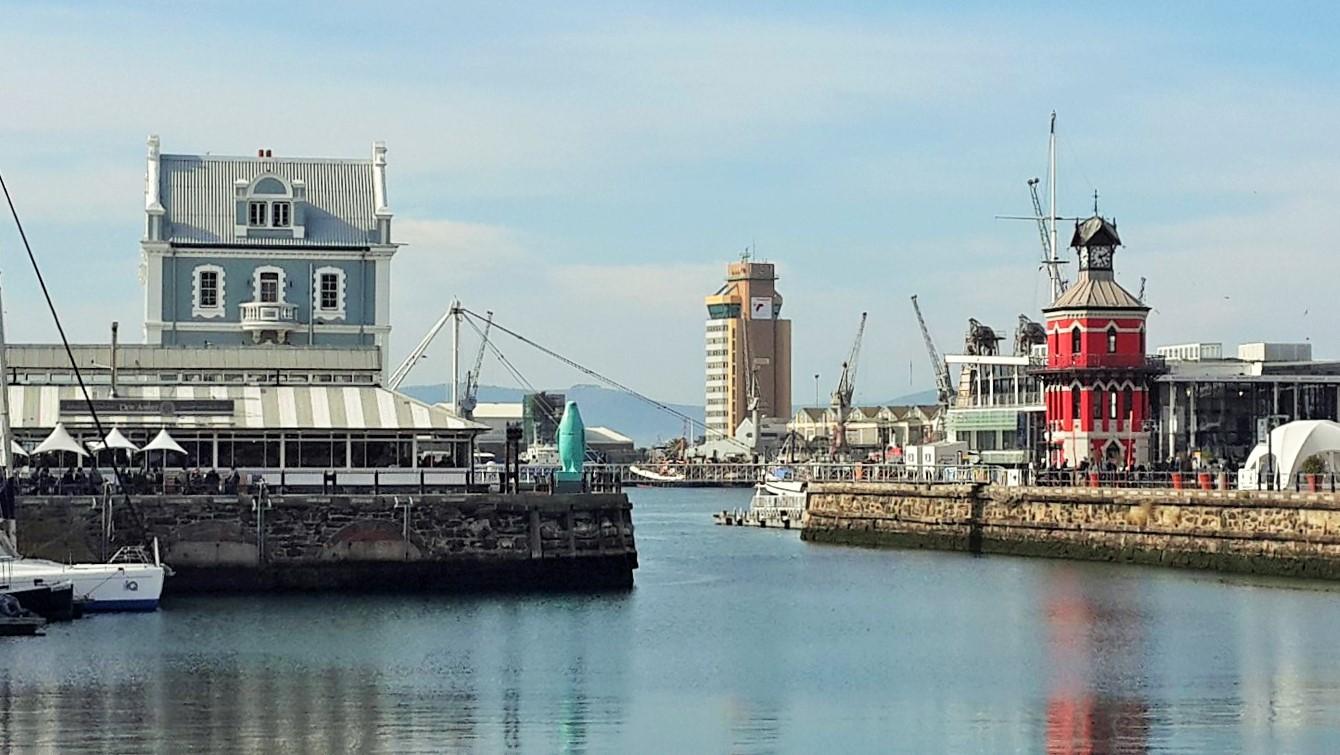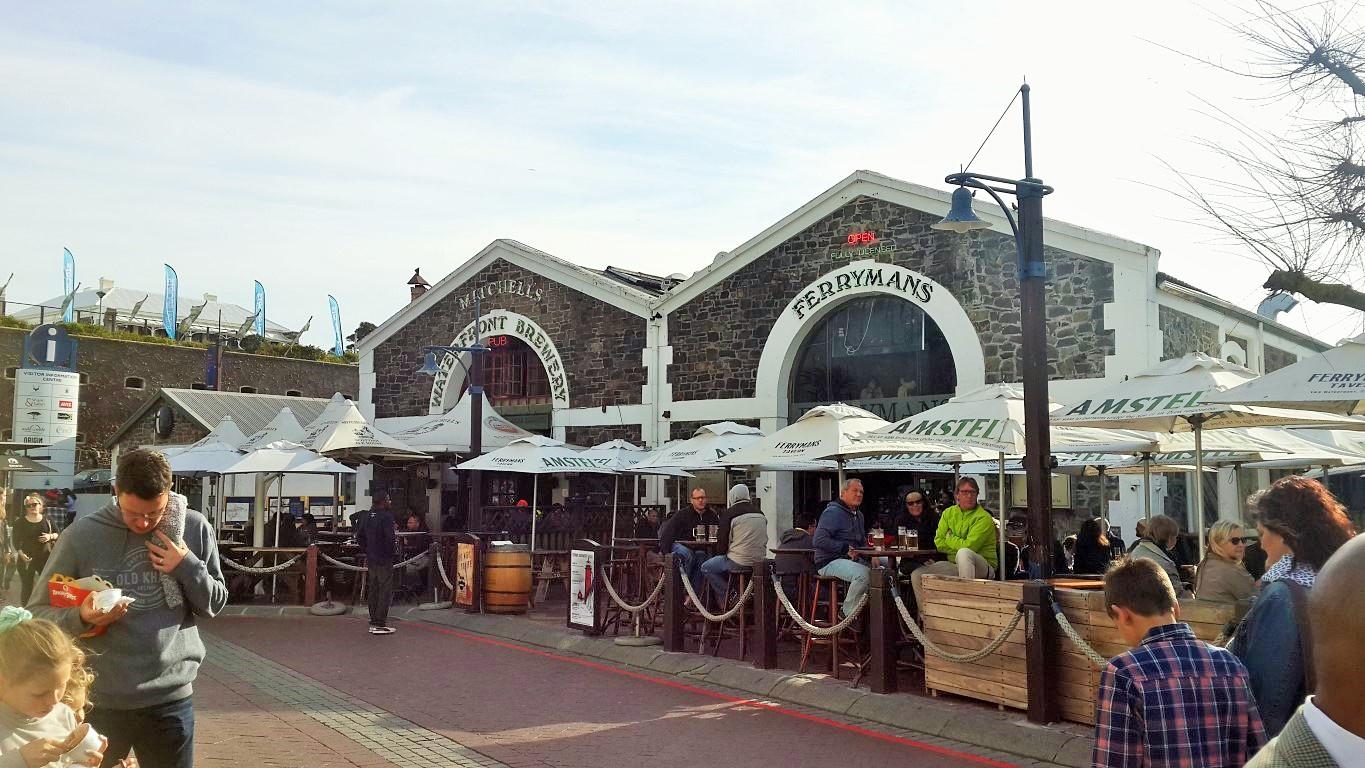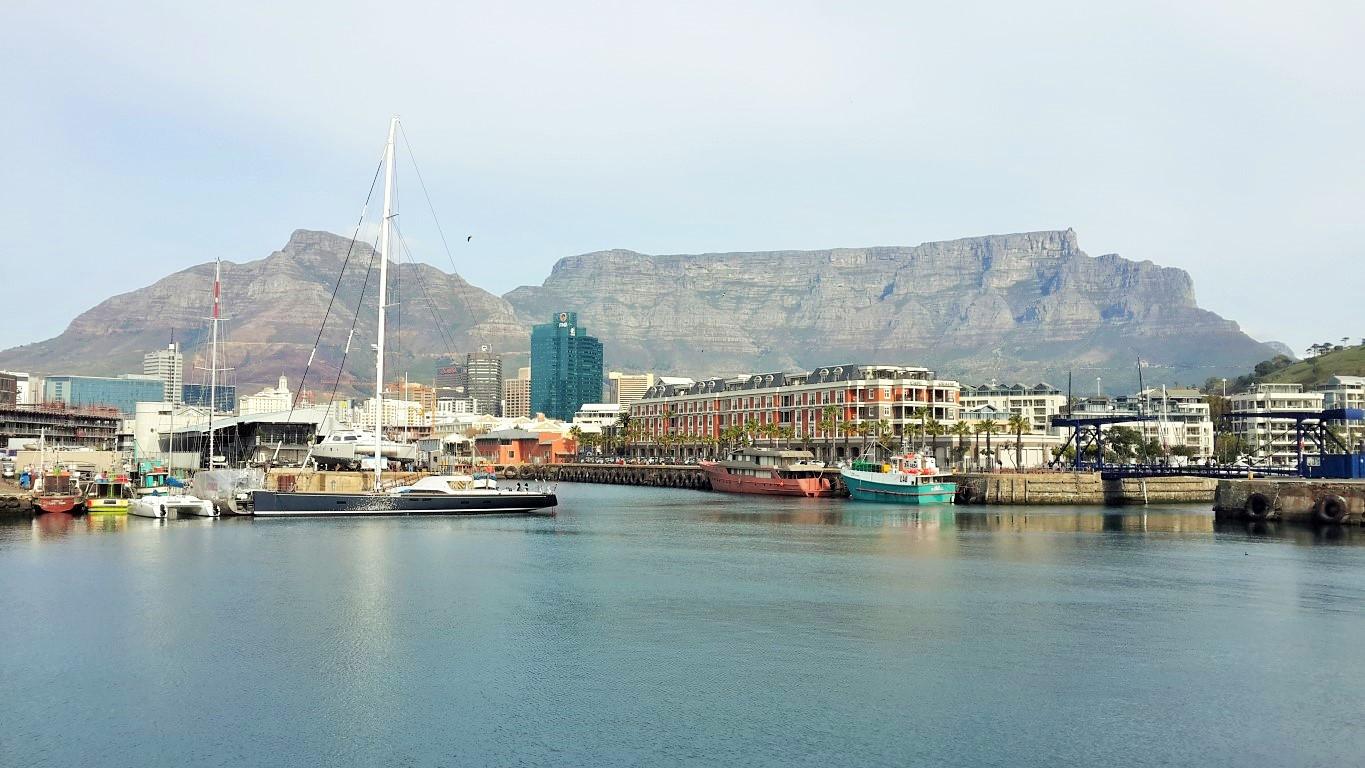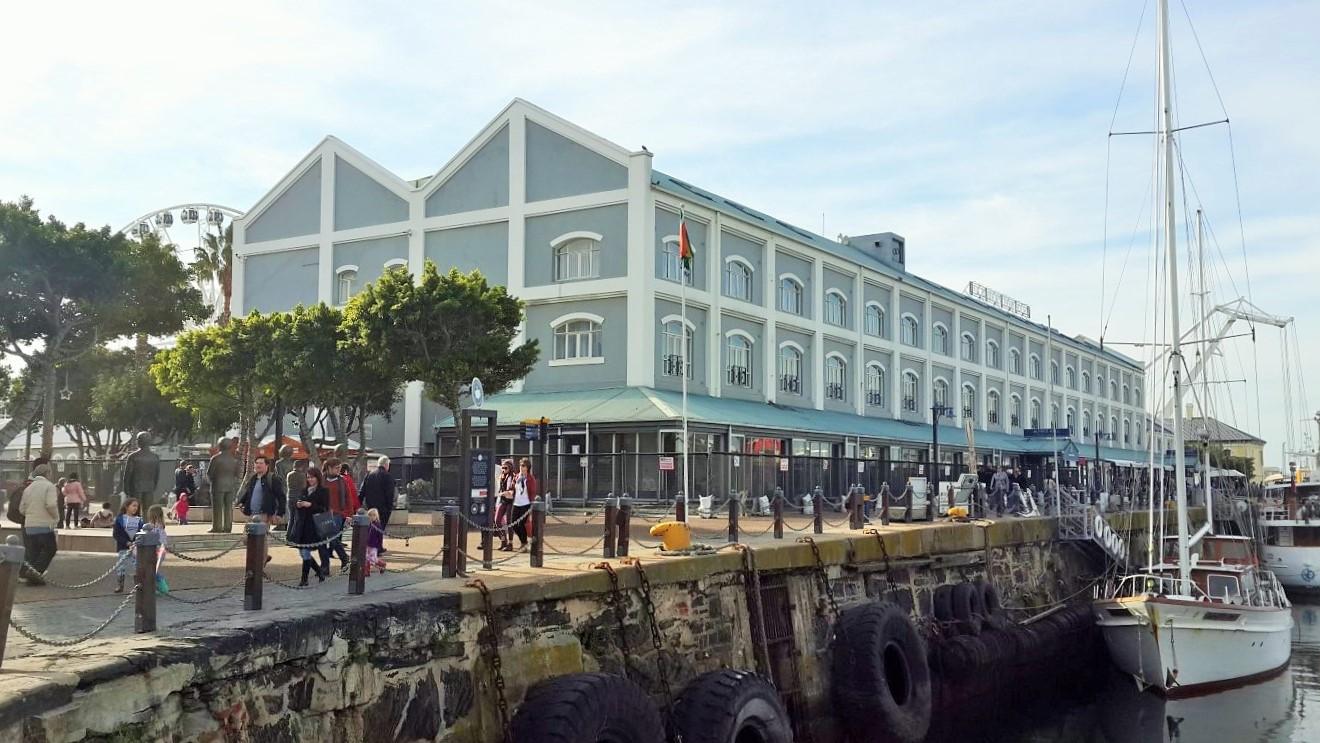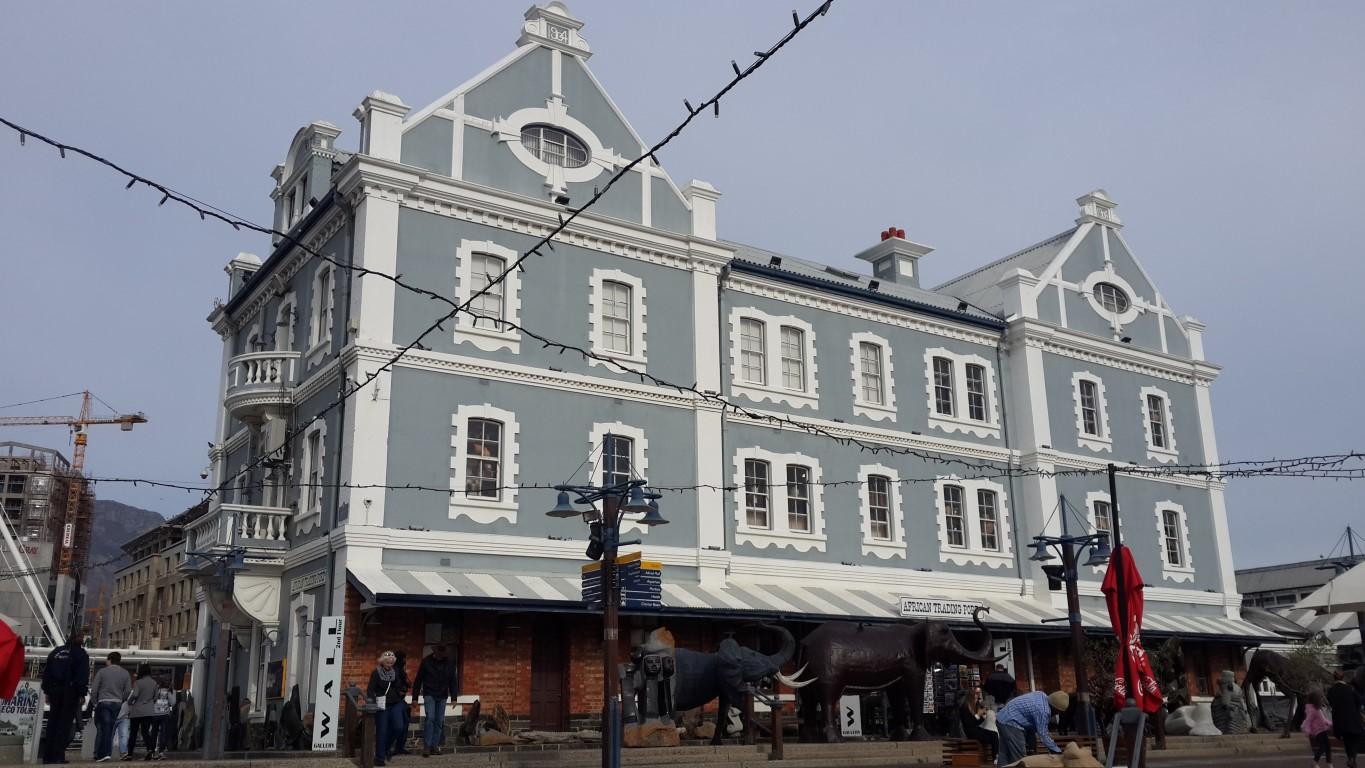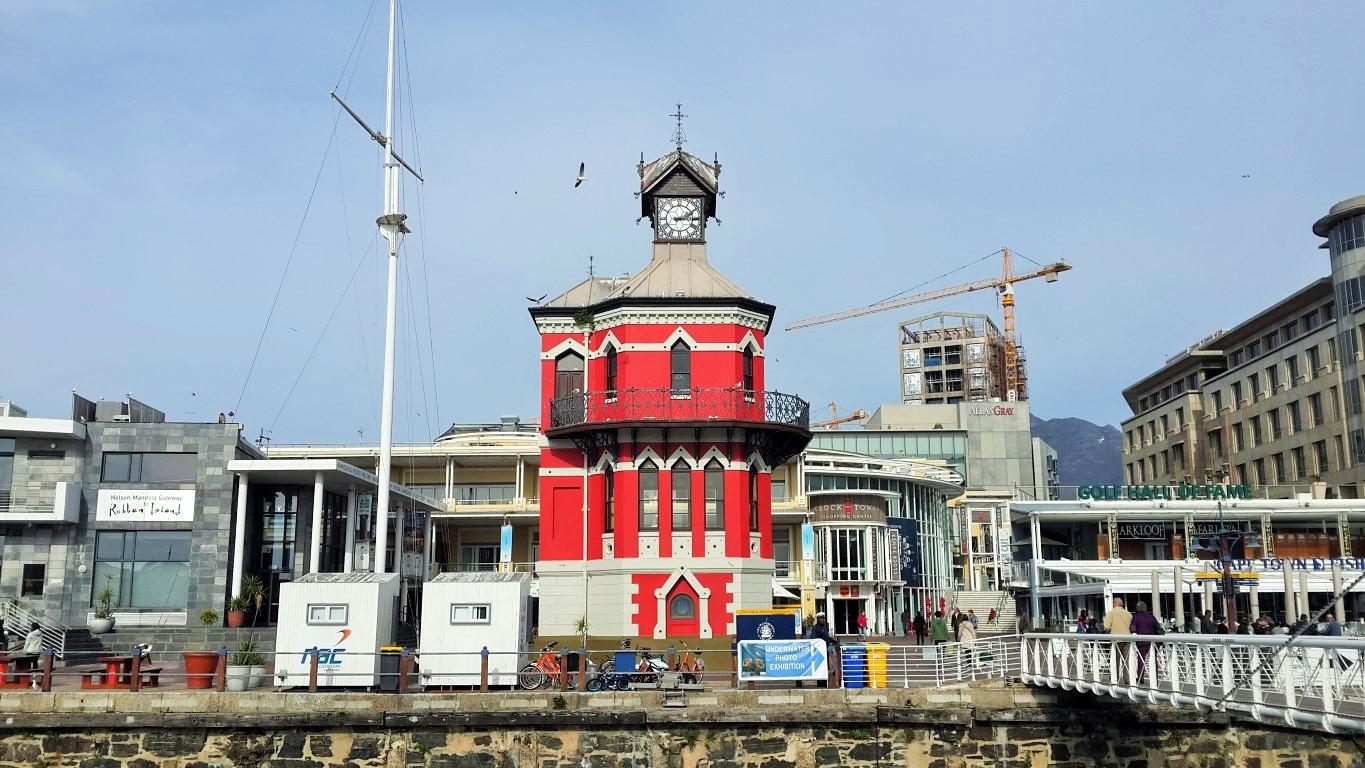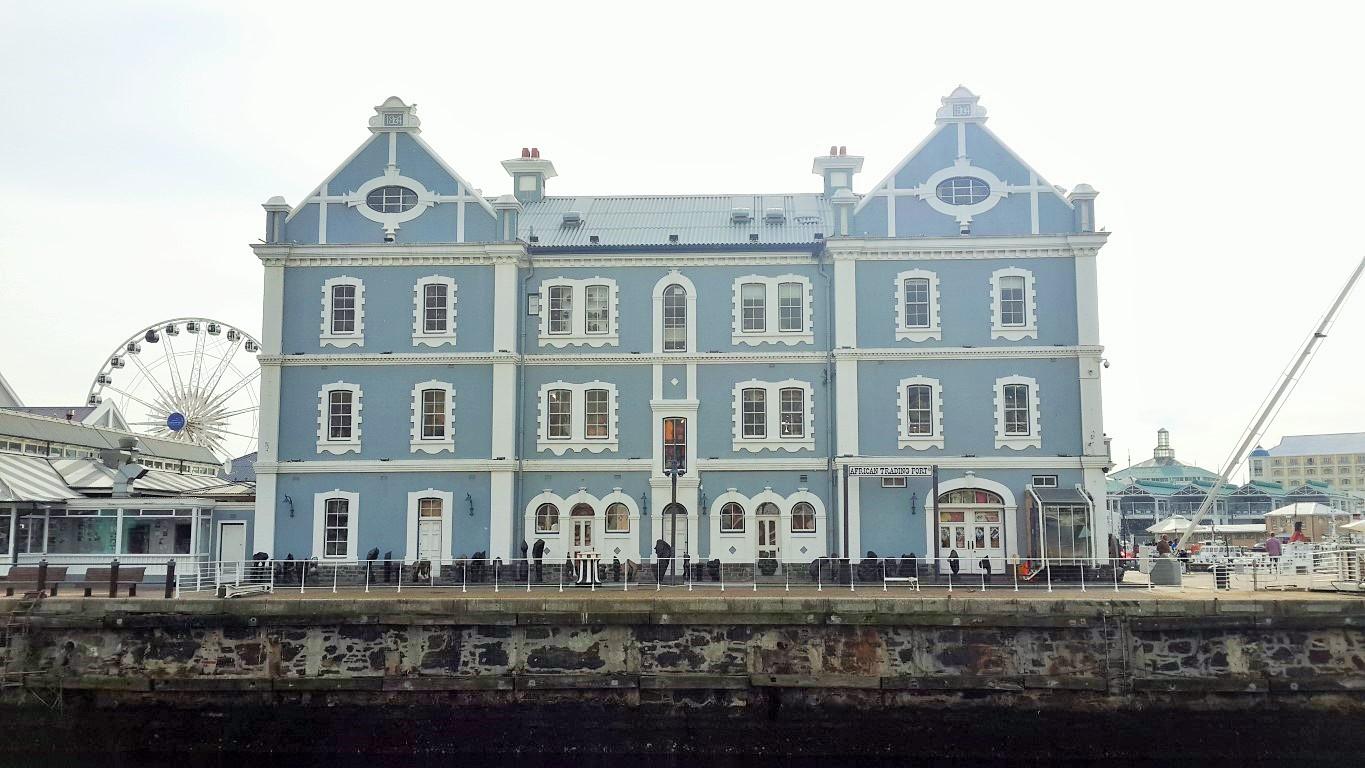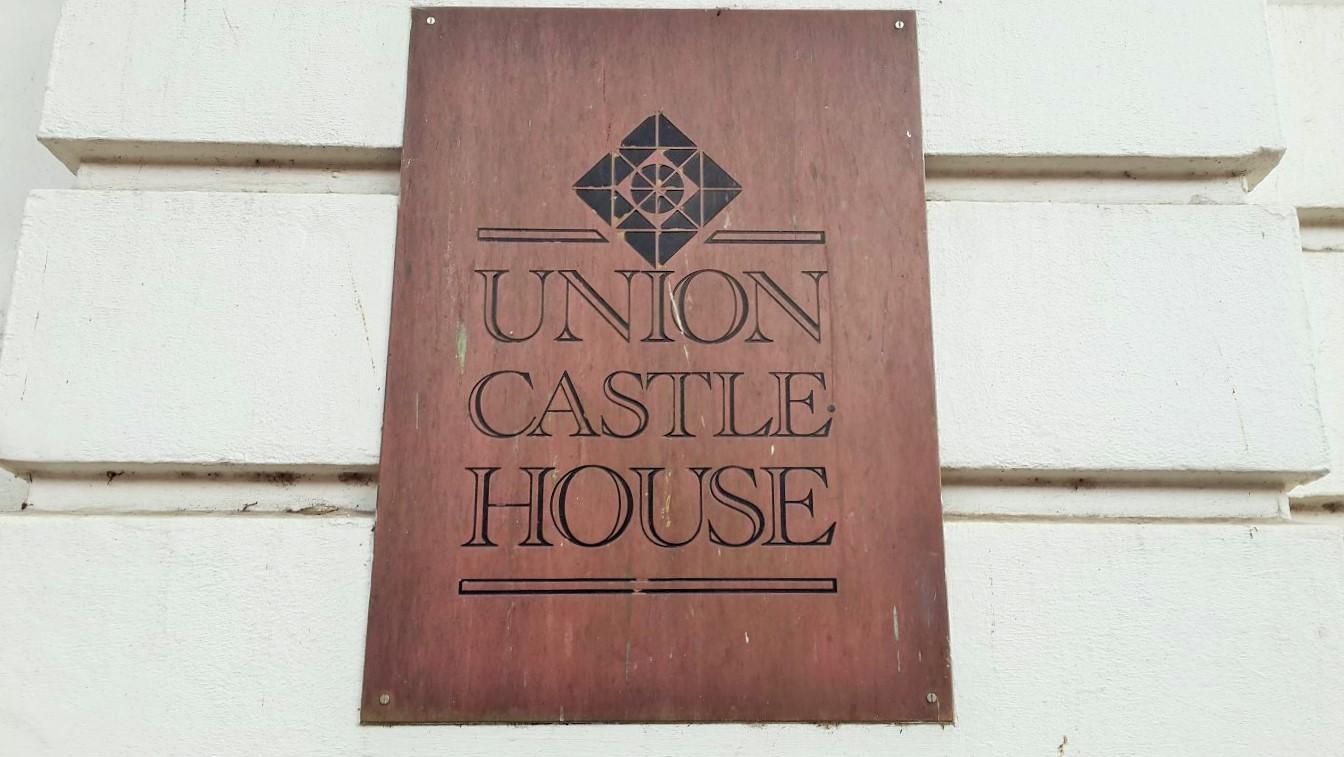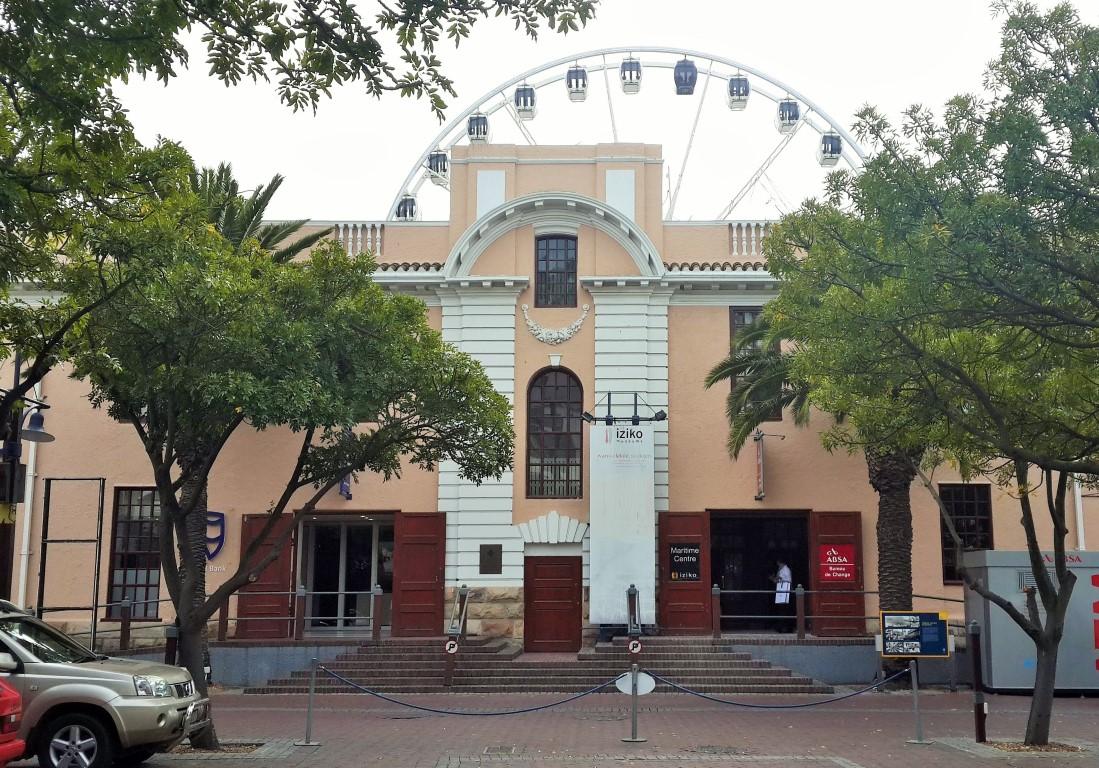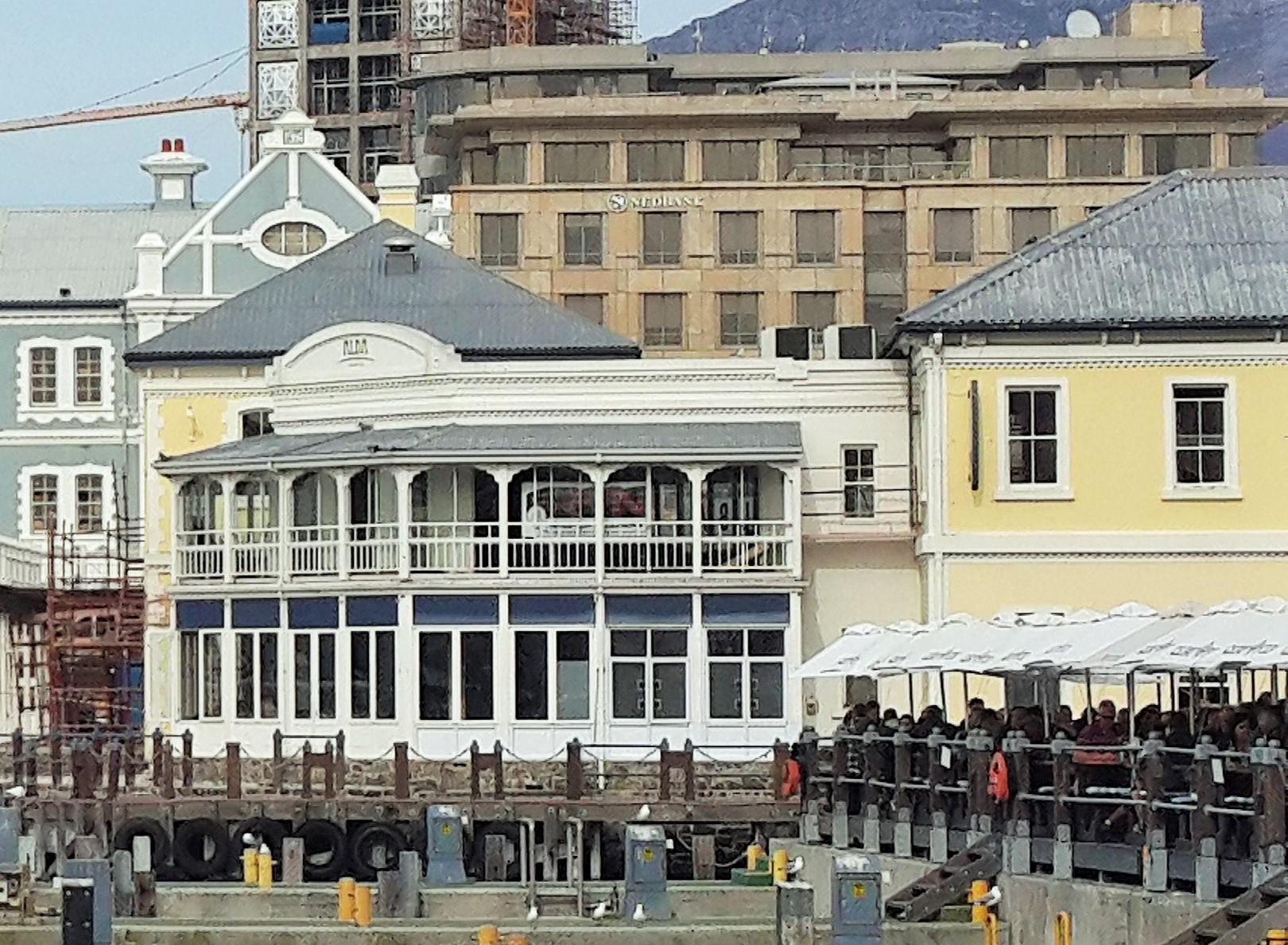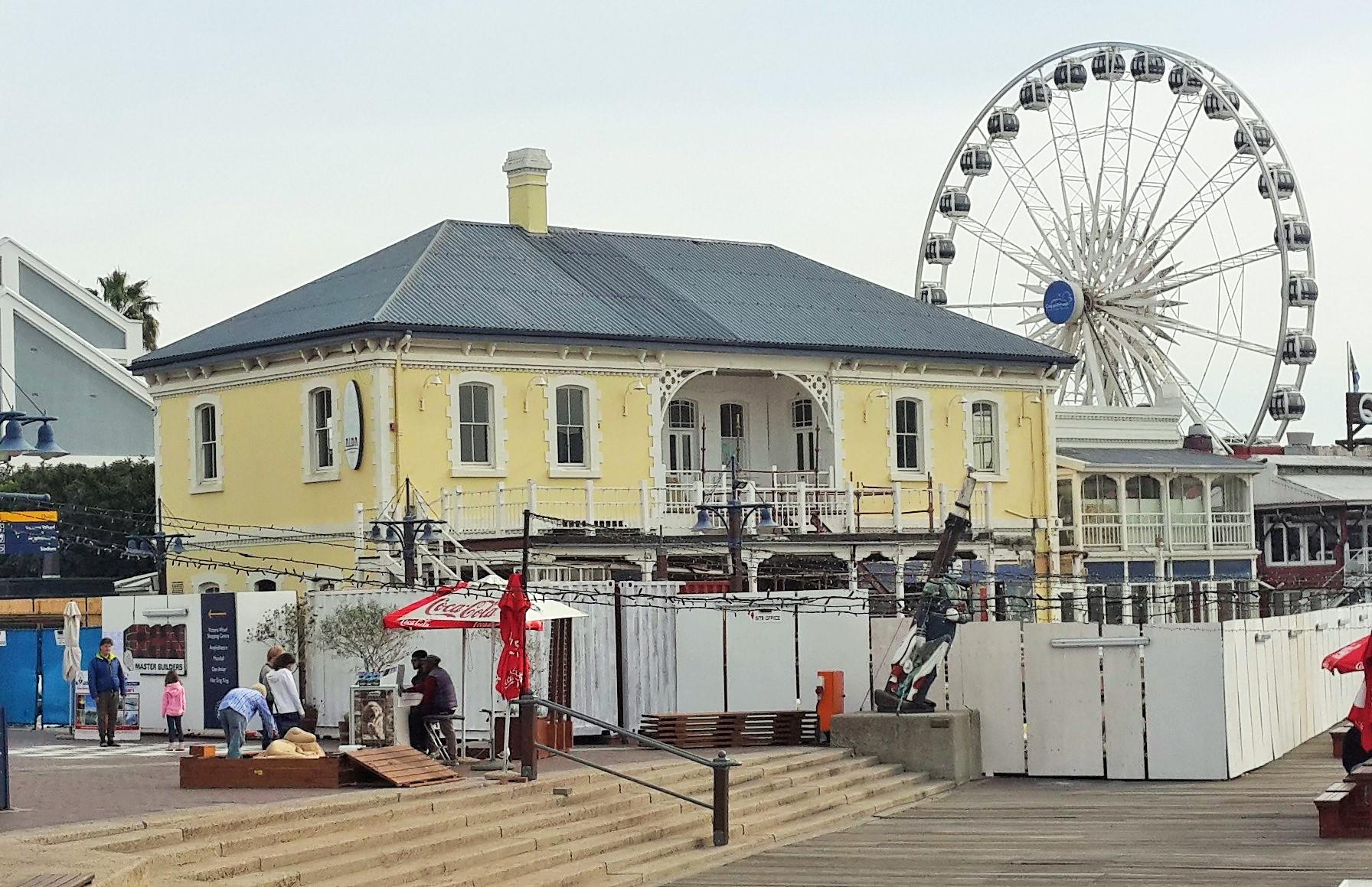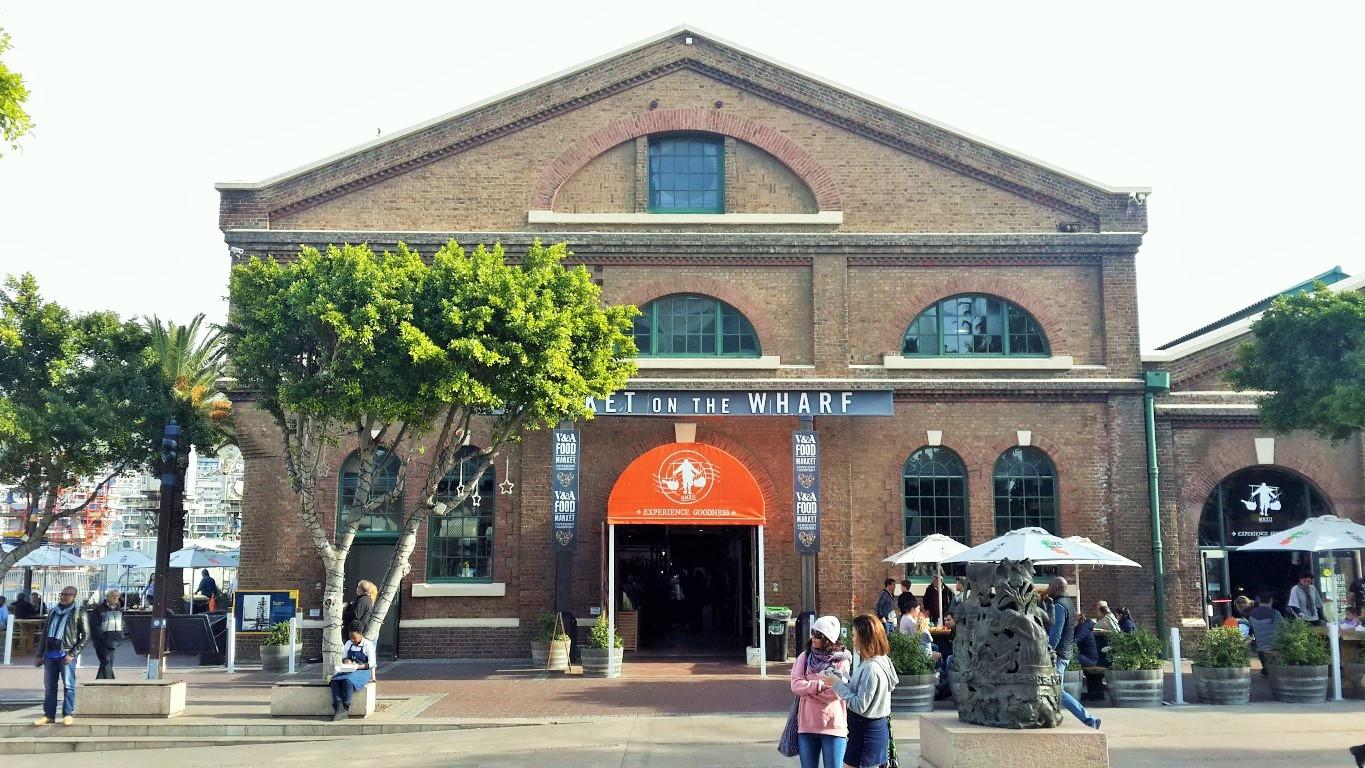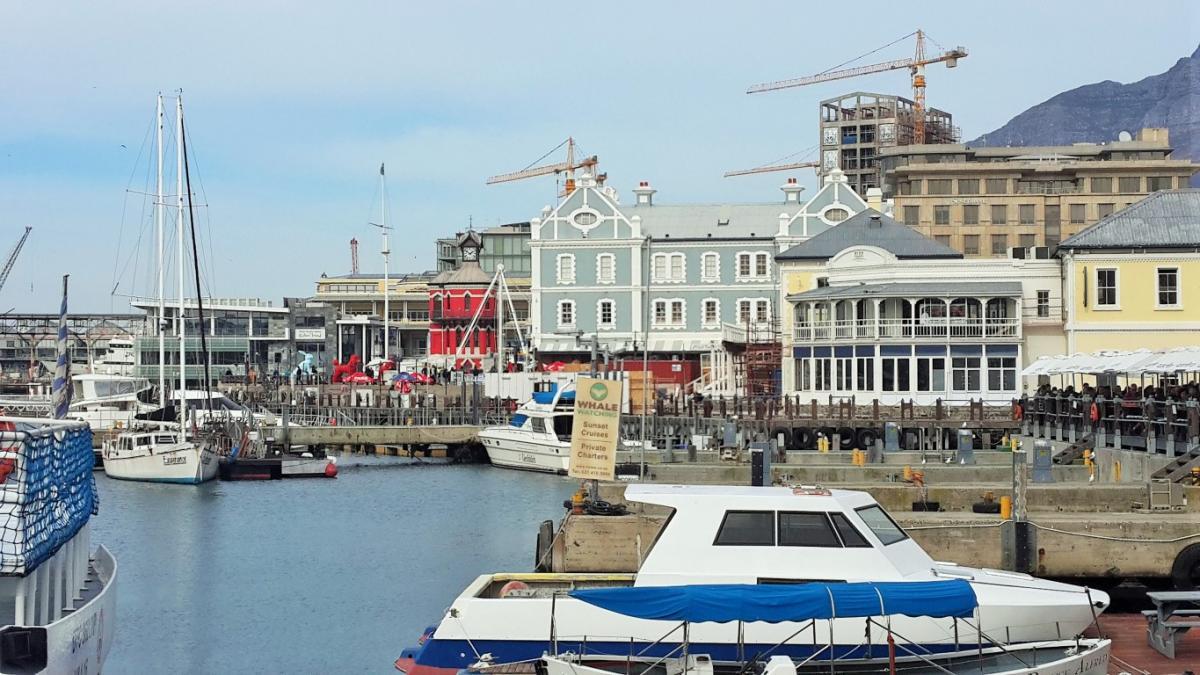
Disclaimer: Any views expressed by individuals and organisations are their own and do not in any way represent the views of The Heritage Portal. If you find any mistakes or historical inaccuracies, please contact the editor.
The Victoria & Alfred Waterfront is one of the great South African adaptive reuse case studies. Below is an in depth article on the work conducted during the first phase of this landmark project (completed 1990/1). The piece appeared in the 1992 edition of Restorica, the journal of the Simon van der Stel Foundation (today the Heritage Association of South Africa). Thank you to the University of Pretoria (copyright holders) for giving us permission to publish.
The establishment of the historic link between the City of Cape Town and the sea is regarded as a key factor in securing the viability of the city in environmental and cultural terms. The restoration of these historic linkages, the retention of the working harbour, the rehabilitation of individual buildings at the Victoria and Alfred Waterfront (V&AW) and the accommodation of adaptive uses are all regarded as conservation activities in the broader sense and thus worthy of the 1991 Cape Times Centenary Medal for conservation and building rehabilitation.
The Waterfront has also received the Cape Institute of Architects conservation award for the Pierhead & Portswood Precincts while the number of declared national monuments at the Waterfront has risen from three to eighteen.
The V&AW project provides the forum for organised planning action to restore the physical and cultural ties between city and harbour and the means for a variety of development agencies and professional disciplines to operate towards a widely based common goal.
This symbiotic relationship between shared cultural values and goals and the physical framework established to encapsulate them is regarded as a precondition to good conservation practice and has rarely been achieved in Cape Town.
Political impositions as well as the paradigms adopted by the different professional disciplines involved in city building have resulted in the erosion of holistic, shared cultural values and consequently a fragmented, disjointed approach with a tendency toward the individual and idiosyncratic.
Conservation is thus frequently perceived as separate from the ongoing planning process and often regarded as an elitist pursuit. The process adopted by the V&AW in realising and embodying a common vision and the various projects now coming to fruition are regarded as worthy examples of an attempt to recover the positive aesthetic and social qualities that are an integral part of Cape Town. They are regarded as part of the process of restoring and enhancing the unique personality of Cape Town which has eroded over the past half century. The particular conservation approach adopted, which may be termed 'integrated conservation', combines social, economic, and physical aspects and is thus closely aligned with the ongoing planning process. It is distinct from other categories such as stylistic or archival restoration which have tended to be the traditional conceptions of conservation activity.
In the context of fundamental and rapid change and the reintegration of the harbour into the dynamic development processes inherent in city growth, integrated conservation is regarded as the most appropriate of conservation activity.
Conservation means all the processes of looking after a place so as to retain its cultural significance. It includes maintenance and may, according to circumstances, include preservation, restoration, reconstruction and adaptation and is commonly a combination of more than one of these.
Most of the work done in the Waterfront project relates to the rehabilitation and refurbishment of existing buildings for adaptive uses. Development pressures and the significance of most of the buildings suggest that this is the most appropriate form of intervention.
The approach has thus been one of infill-development, maintaining the grain and fabric of the existing structures as well as heights, roof pitches and architectural detail. Where historical evidence exists, more substantial restorations have been permitted. Since the V&AW Company began operating in March 1989, the list of historic buildings rehabilitated for adaptive uses while retaining their cultural significance, has grown steadily.
The rich heritage of the historic buildings, national monuments and artefacts provide a level of interest and appropriate human scale which make the Waterfront not only South Africa's premier historic precinct, but also a unique tourist destination.
An iconic historical precinct (The Heritage Portal)
The Ferrymans Tavern and Mitchells Brewery (Powers Gerstner Associates)
The history of the buildings comprising the Ferrymans Tavern, Mitchells Brewery and the Maturation cellar is not certain. The former buildings were probably built circa 1860 and are among the oldest buildings in the area. From early photos it appears as though they formed part of a cargo storage complex which extended to the present Information Centre. A large part thereof, including the corner of the Ferrymans Tavern, was later demolished to make way for the railway. These two buildings are relatively high as they were built to accommodate a second floor which was directly accessed via 5,5 m high arched doorways at the south end.
Both the ground and the upper floor are constructed of heavy timber boards carried on substantial joists, timber posts and beams and were clearly designed to carry heavy loads.
The long, low building housing the store and cellars for the brewery was built around 1870 and was used as a timber store for some time. It was later used as a general store.
All three buildings were in a good state of repair externally and very little work, apart from the rebuilding of the demolished corner, was required to restore them. Two windows on the north-eastern side were removed to provide access to an outdoor restaurant and beer garden which will be designed once the site boundaries have been determined.
The refurbishment of the interior was more difficult. Though apparently sound, several of the timber posts supporting the upper floor had rotted and had to be replaced.
The concrete floors were in a bad state of repair and had to be broken up and replaced. In the fermentation cellar the floor had to be lowered about 0,6 metres to accommodate the fermentation tanks and equipment.
The roof structure, including the delicately designed steel trusses, was in a good state of repair and only required cleaning and painting. Some of the asbestos was replaced with translucent sheets to improve the lighting in the brewery area.
The new stairways and balustrading are simple and sturdy in sympathy with the existing timber components while the subdivisions between the various service areas have been designed so as not to compromise the integrity of the existing structure.
The Ferrymans Tavern and Mitchells Brewery (The Heritage Portal)
The North Quay Warehouse conversion into the Victoria & Alfred Hotel (MLH Architects and Planners)
The refurbishment of the old north quay warehouse to create a hotel formed part of the first phase of harbour redevelopment. The warehouse is a long, narrow, twin-gabled building which stands on the north quay of the Pier Head, overlooking the Alfred Basin to the south. It was constructed in 1904 as a three storey building and is a steel-framed structure with massive I-beams and columns rivetted rather than welded together. The thick, load-bearing perimeter walls are of plastered and painted brick, and the structural fabric is expressed externally in concrete mouldings. In the 1930s the third storey was destroyed by fire and the building was reroofed at first floor level.
Alfred Basin (The Heritage Portal)
In terms of redevelopment options, it was established that the building was solidly built and suitable for refurbishment and its particular form was regarded as appropriate for a hotel. The brief proposed a three-storey hotel of 60 bedrooms as well as a conventional reception, dining and service facilities and a small arcade of speciality shops.
At a later stage the brief was extended to include the conversion of the old rope store into a restaurant.
The design approach adopted was based on four key elements which are of conservation significance:
- the industrial aesthetic observed in the structure itself and in the wharfside environment was to be retained and enhanced;
- the simplicity of the building as a warehouse was to be maintained;
- the interior spaces should afford the opportunity to create a strong impact and reflect the harbour environment in greater detail;
- the building's relationship to its immediate environment was to be integral, acknowledging other buildings and the outdoor spaces of the precinct.
The warehouse was stripped of its finishes and fittings. The steel structure was strengthened, the roof removed and then replaced on the re-used trusses.
The walls were built up 3,5 metres and the second floor was cast. New window openings on the top floor were constructed with arched lintels, in keeping with those existing on the lower floors.
The restaurant occupies the former rope store in the form of a double volume structure into which a number of 'half levels' have been introduced. The steel structure of the old rope store extends upwards through the height of the building and the various upper levels are accessed by steel stairways. Steel balustrading contributes further to the sturdy industrial aesthetic.
The approach of adaptive use towards this building is regarded as a most appropriate and pragmatic form of conservation activity. The development has further enhanced and brought to the fore the qualities of the simple industrial aesthetic of the old warehouse and harbour environs.
Victoria & Alfred Hotel (The Heritage Portal)
The Old Port Captain's Building (Munnik Visser Black Fish and partners)
The three-storey gabled building stands toward the southern edge of the Pier Head which borders the Cut. It was designed by the port authorities and was constructed in 1904 to provide new premises for the port captain.
Old Port Captain's Building (The Heritage Portal)
Before this, the Clock Tower had served as the port captain's office and more recently the offices were relocated to a highly prominent tall building constructed specifically for this purpose at the end of the south arm. The old port captain's office was built solidly and with care. Thick, load-bearing brick walls and timber floors, gables, cornice mouldings and architrave details illustrate the attention paid to architectural detailing.
The Clock Tower (The Heritage Portal)
The architects report that the restoration of the building was essentially a cleaning-up process. No major changes were undertaken. The building has always provided office space and, now refurbished, it accommodates the offices of the V&AW Company on the first and second floors and part of the ground floor. The intention is also to accommodate small retail outlets at ground level.
Random buildings, which had been erected over time adjacent to the port captain's office or nearby and were seen to be of little historical value or out of place in the redevelopment of the area, were demolished.
External repainting restored the building to its original stature. Colours of grey, white and blue are in keeping with those used on other buildings in the vicinity. Doors and windows were restored or reintroduced where necessary. Some internal walls were adjusted to suit new accommodation requirements and new ceilings were installed. Toilets and all services have been replaced with facilities which meet present-day requirements. The result is a modern office facility within a building with much character and presence. It is also situated in an exceptional environment. It reveals an appropriate adaptive use in terms of accepted conservation activities.
The Old Port Captain's Building (The Heritage Portal)
The Union Castle Dock Offices (Gallagher Prinsloo Associates)
The dock offices of the Union Castle Mail Steamship Company Ltd were designed by the architectural practice of Baker Kendall and Morris and built in 1919. The carefully proportioned, double-storey building, almost square in plan, stands between the North Quay warehouse, now the Victoria and Alfred Hotel, and Quay Four. As part of the Pierhead Precinct project, the building was restored externally and substantially altered internally to function as a jewellery retail and exhibition centre.
The building had functioned as the premises of the mail steamship company until the mid 1960s, when passenger numbers and cargoes started declining and when the mailships were taken over by the South African Marine Corporation.
Current signage (The Heritage Portal)
It was constructed to withstand the rigours of the harbour environment and to provide office and warehouse space. It is a concrete frame structure with 345mm brick walls and is plastered and painted above a stone plinth. Tall ash windows are placed symmetrically on either side of elaborately detailed entrance portals on the north and south facades.
Robust durable materials were used in the original construction as well as in the finishes and fittings both externally and internally. Working from the original drawings the architects have strived to restore the building to its former stately appearance. An elderly German stonemason, one of the few craftsmen of his kind in South Africa, was commissioned to restore and repair the stonework at the base of the building. Table Mountain sandstone was supplied to the site from the Cape Town Castle to replace elements of the plinth where necessary. The walls have been repainted in a soft pink colour and plaster mouldings have been restored and repainted white. The doors and windows of Burmese teak have weathered well and have been retained. Where windows had been removed in previous alterations they have been replaced and the shutters reinstated. Parapet balusters of precast concrete have been replaced and new clay cornice tiles have been manufactured to replace those existing. The original timber flagpole that stands above the north entrance and which is held in position by cable stays, has also been repaired.
A new main public entrance has been established on the south facade to relate to the square located between the jewellery centre and the Victoria and Alfred Hotel. Interior spaces have been reconstructed to suit the accommodation requirements of the new jewellery centre.
The conservation approach has responded to the particular significance of the building which is primarily a function of the presence it establishes on the square and its fine external detailing. The successful adaptation to accommodate a new function has been achieved in a manner which has enhanced these positive elements.
Union Castle Building (The Heritage Portal)
The Old Harbour Tea Room (Munnik Visser Black Fish and Partners)
The Harbour Cafe dates from 1902 and is a conventional double-storeyed building, rectangular in plan. It originally served as the harbour tearoom providing "first class" facilities on the upper level where a balcony overlooks the Victoria Basin and "second class" facilities on the ground floor. The verandah which faces the water at this level was a later addition and was subsequently enclosed with glass.
Old Harbour Tea Room (The Heritage Portal)
The building is a brick construction, plastered and painted, and is roofed with an S-profile sheeting. Similarities can be observed between it and the port captain's office which was built two years later. These features relate primarily to the simple, solid construction, the size, shape and placement of windows and the details of moulded window surrounds and cornices. Further detailing in the eaves brackets, the balustrading and in the plastered quoins are further evidence of the care with which this building was finished.
The Harbour Cafe occupies a prime site on the Pier Head adjacent to the old timber wharf and overlooking the main tug berth of the harbour, the slipway and Quay Four.
It was considered appropriate that not only the building but also its function as a restaurant should be retained. The developers and architects also felt that the amenities provided could be extended in a new wing incorporating terraced restaurants and speciality shops. This new wing extends from the north of the existing building and follows the corner of the quay to run westward parallel with the slipway. Although it adjoins the Harbour Cafe and responds to the aesthetic of this building, the identity of the latter remains distinct.
It is rarely possible in conservation practice to replicate the original use of a building. In most instances at the Waterfront, adaptive uses have been accommodated which have been regarded as appropriate to the existing fabric and conservation worthiness of the buildings. The retention of the existing function in a refurbished building is regarded as appropriate and responsible conservation practice.
The Old Harbour Tea Room (The Heritage Portal)
The Old Dock Road Power Station (Johan du Toit designer)
The complex consisting of the Dock Road cafe, the theatre and the pump house bar is accommodated in the original electric power and light station dating from c1900 and the Robinson graving pump house which dates from c1880. The original stack to the south west of this building has since been demolished. The main building has fine decorative red and ochre brickwork with pilasters and corbelled string courses. Both buildings establish a fine presence, overlooking the graving dock and this has been enhanced by the demolition of later accretions which did not have any conservation significance.
The internal fabric was stripped and the structure exposed. In some instances solid walls were punctured to enable interaction between the different functions envisaged for the building. In general utility spaces are housed in the core to allow maximum public use of the perimeter spaces. Infill elements are either recycled elements or are designed to be sympathetic to the historical context without attempting to be historically correct.
The end product has a layered look, both spatially and historically. Elements that are regarded as being of conservation significance, in particular the building shell, have been retained and interior spaces have been designed in a sympathetic manner. In the original graving dock pump-house much of the original machinery has been retained to establish a dramatic character to the bar facility now accommodated there.
The retention of the main structural elements of the complex and the judicious incorporation of some of the working elements of the original function represent a successful adaptation of a conservation worthy building to accommodate a new use.
Old Power Station Building - today Market on the Wharf (The Heritage Portal)
The Old Customs Warehouse (Louis Karol Architects)
The Old Customs Warehouse building has been incorporated into the large retail centre in the Pier Head precint. The expressed design of the retail centre is to continue the fabric of the Victoria and Alfred area while helping to transform it from a pure working environment to one that encourages a high degree of public access.
The original fabric of the environment comprised mainly large sheds with irregular spaces between them. To ensure the continuity of this fabric the architects have attempted to maintain the existing figure:ground relationship. The irregularity of the spaces between the sheds has resulted from the subordination of these spaces to the relationship of the sheds with the water or with transport lines. However, the urban designers have attempted to exploit the positive relationships among the sheds by transforming some of them into piazzas along the main lines of pedestrian movement.
The old customs warehouse, built c1904, was regarded as one of the major design informants. Both the larger warehouse building and a smaller double-gabled building immediately adjacent to it were built as new workshops for the Union Castle Company. It would appear, however, that the main building was used mainly as a warehouse. It was occupied by Irvin and Johnson Co Ltd and used for cold storage and offices immediately prior to its takeover by the Waterfront Company.
During initial inspections of the main building, the architect's engineers reported that the steel work was in a poor state of repair and that its retention and conservation necessitated the treatment of extensive rust corrosion and the application of detumescent paint. This in turn required the removal of most of the brick infill panels in order to gain access to the steelwork. Drawings and photographs allowed the reinstatement of the brickwork to be close to its original condition. The proposal for the main building entailed the addition of another gable containing two bays on the west side of the extension of the building for another five bays to the north. As the significance of the building is primarily a function of the presence it establishes in townscape terms, it was established, in close collaboration with the National Monuments Council, that the proposals would not detract from this presence.
The juxtaposing of the new building with the old and the contrast in materials, massing and densities thus established contribute to the variety and complexity of the spatial experience in the precinct. Similarly by exposing the facade of the warehouse to an indoor piazza, its scale and detail contribute directly to the architecture of the waterfront.
After extensive negotiations with the National Monuments Council it was also decided to retain the smaller I & J building despite the complications this caused in terms of its incorporation into the main retail centre complex.
Conversion of the Old Breakwater Prison into premises for the Graduate School of Business (Revel Fox and partners)
The decision to locate the Graduate School of Business in and around the old Breakwater Prison was taken after the analysis of a number of alternative locations. The choice of the Breakwater Prison is regarded as beneficial to both the development programme of the business school as well as to the overall development of the V&AW.
The Breakwater Prison forms a highly significant element on the Portswood Ridge Precinct, the second phase of development after the Pierhead Precinct undertaken by the V&AW Company.
The prison building is significant in both historical and aesthetic terms. Built at the turn of the century, it formed the second phase of the overall Breakwater Prison complex. The first phase, completed in 1862, was built immediately to the northwest, and only a fragment of this remains.
The second major phase, officially termed the new convict station, reflected a shift in penal attitudes prevalent in Britain at the time. The emphasis was placed on the teaching of skills to improve the opportunities of the prisoners, as opposed to the purely punitive measures employed at the earlier convict station. The presence of the treadmill immediately adjacent to the existing prison, but built some ten years earlier, provides a dramatic example of this earlier attitude.
However, this change in emphasis was selectively interpreted by the local authorities and the new building provided an early example of the emerging race-class divide. It was for white male prisoners only. Non-white prisoners continued to be incarcerated in the original Breakwater convict station and the emphasis there continued to be on manual outdoor labour and a punitive course of action. The acquisition of skills and the consequent improvement of life chances was considered a whites only preserve.
In formal aesthetic terms the significance of the existing prison building relates primarily to the visual prominence it displays on the Portswood Ridge. Its fortress-like quality set high on an embankment establishes it as a landmark feature in the whole precinct.
The use of this building as the new accommodation for the Graduate School of Business of the University of Cape Town is regarded as most suitable and appropriate. As opposed to other potential uses, for example an hotel, the particular teaching approach of the business school allows the main structure to be maintained intact. The fortress-like quality of the building, characterised by a dominant wall architecture with minimal openings, is thus preserved.
The Portswood Ridge Precinct (Revel Fox & Partners)
Architects Revel Fox and Partners undertook a conservarion study of the Portswood Ridge precinct in order to establish the conservation significance of buildings and related structures on a more comprehensive basis.
The brief included:
- to review the area in terms of its architectural and cultural historical significance and to make recommendations on an appropriate urban conservation strategy for the area;
- to clarify, in consultation with the National Monuments Council, the actual extent of the declared National Monuments in the study area;
- to identify and review all buildings and structures older than 50 years and to assess the merits/demerits of retaining these buildings and structures.
Conservation principles were:
- It is better to consolidate than to repair, better to repair than to restore, better to restore than to rebuild, better to rebuild than to embellish.
- Authenticity is a key tenet in the conservation process.
- Conservation-related activity must correspond to the available facts and avoid conjecture.
- Conservation should take into consideration all aspects of cultural significance without unwarranted emphasis on any one at the expense of the others.
- Conservation requires the maintenance of an appropriate visual setting, e.g. form, scale, mass, grain, colour, texture and material.
- No new construction, demolition or modification which would adversely affect appreciation or enjoyment of the place should be excluded.
- Buildings or structures should remain in their historical locations.
- New development including alterations and additions should be of a neutral or harmonious nature. They should respect the urban context, historical character, etc.
- The contributions of all periods to the place must be respected.
- Alterations and additions should, whenever possible, be reversible.
The Portswood Ridge boasts a collection of fine old houses which consist basically of three groups: a) Dock House, U!undi and Windermere; b) The Moorings 1 to 5 and c) separate villas along Portswoord Road, such as Alfred House, Kinellan, Parkhurst/Lotana, Pentridge and Abbotsford.
Dock House was built in 1870 as the Harbour Master's residence. Ulundi followed in 1889 as the residence of the Chief Resident Engineer and Windermere was built in 1905 as a house for the electricians.
The Moorings were built as quarters for officers serving the Convict Station, starting in 1870 and finally reaching completion in 1889. Alfred House and Kinellan served as the assistant port captain's office, Parkhurst/Lotana was the employees' residence, Pentridge the store foreman's cottage and Abbotsford was the residence of the superintendent of the Breakwater Convict Station.
All the above buildings were maintained by the Harbour Authorities, over the years, in good condition. However, certain features were changed and often unsightly additions were made. Unsympathetic roof coverings, crude rainwater goods and dull colours were also added from time to time. Also, many original sliding sash windows had been replaced with modern casements.
In 1989, the V&AW decided to rehabilitate the houses with a view to renting them out as private office accommodation. The brief to the architects was to rehabilitate rather than restore in the true sense. Costs had to be kept to a minimum in order that the rentals charged were viable.
The V&AW was, however, prepared to spend money on restoring certain vital features such as cast iron work, windows, balustrades, etc. and to remove all unsightly additions. They were also prepared to have the houses painted in fresh colours more appropriate to the Waterfront development than to a prison complex.
Individual tenants were found for each house and certain internal changes made, wherever necessary. However, externally, all the houses have been renovated and brought back to their original state as far as possible. Certain appropriate later additions were retained. The wall along Portswood Road has been the subject of some controversy involving the City Council, the V & A and the National Monuments Council. The debate resolved around whether the wall should be retained as is or opened up to reveal the houses behind. In the end a compromise was reached and only some wall panels will be removed and replaced by new steel balustrades.
Comments will load below. If for any reason none appear click here for some troubleshooting tips. If you would like to post a comment and need instructions click here.

